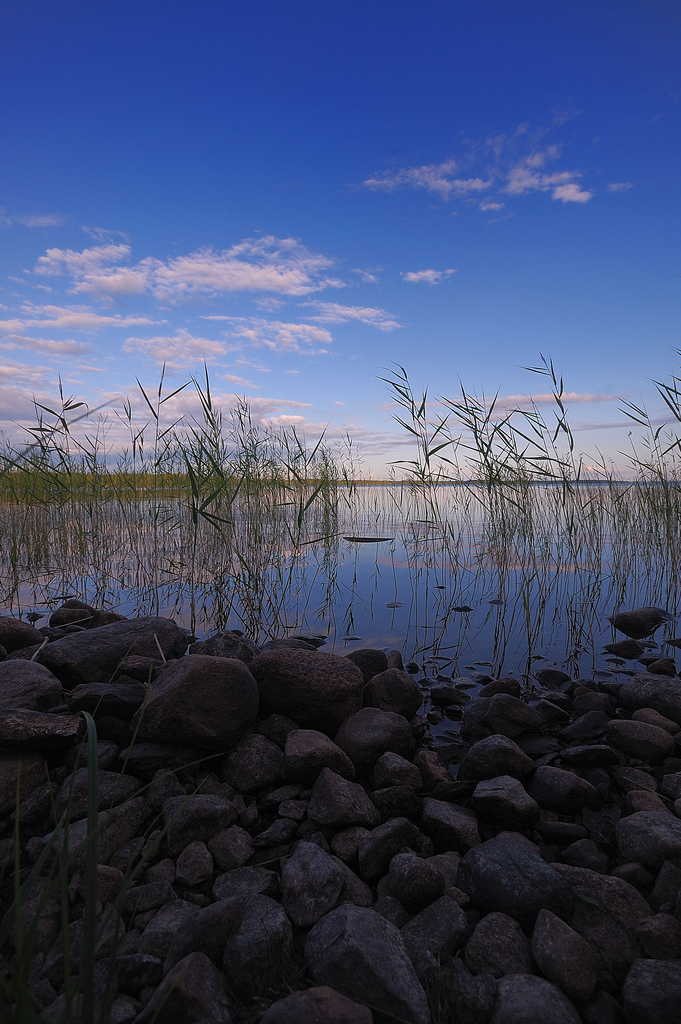First of all, some quick definitions. A wide-angle lens can generally be taken to mean a lens with a FOV (field of view) of 63 degrees or greater (more typically 75 degrees). This translates as follows, according to different kinds of systems:
Nikon FX (full frame; 35mm film cameras) | a lens with focal length of 35mm (more typically 28mm) or shorter |
Nikon DX (APS-C sensor) | a lens with focal length of 24mm (more typically 18mm) or shorter |
Nikon 1 | a lens with focal length of 13mm (more typically 10mm) or shorter |
An ultra wide-angle lens, would be a lens with focal length of 20mm or shorter for FX, 12mm or shorter for DX, and 7mm or shorter for Nikon 1 - basically, the Nikkor 6.7-13mm f/3.5-5.6 VR lens.
| It all boils down to this: Get close to your subject |
It's basically good news, but with the oh-so-usual twist. There is only one thing you need to remember, but executing it correctly requires patience, experience, vision and some luck. It all boils down to this: You need to get close, REALLY close to your subject. Wide-angle lenses are all about perspective; they enhance the apparent distance between the foreground and the background, producing a certain distorting effect, that can have very attractive repercussions, when done correctly.
But what does 'close' mean, really?
It depends on the occasion, is the answer. Or, to put it this way, it depends on the size of the subject. On the duck photo you see above, the camera was lowered to ground level and carefully approached towards the duck. I snapped a dozen unsuccessful shots before this one (even if you're a duck used to people, having this big black box slowly approaching you can drive you away). The distance between the end of the lens and the duck was maybe 20cm/8". Consider the following example:
| A less successful attempt; I couldn't get close |
Although it's not a bad image, it's not what I would have wanted to do. The reason is that I couldn't get closer to the geyser.
Would you like to see a counter-example? See how completely flat and artistically meaningless the following photo is:
 |
| A much, much more boring result. |
There is a vast empty area, and there is nothing really for the eye to grab on. The worst possible use of a wide-angle lens is as a lens to "fit everything in the frame". A great number of photographers make this mistake, they use focal length as a substitute for feet - tele instead of getting near, wide-angle instead of moving back. Remember what I said in this article?
Unfortunately, many beginners misunderstand the use of a zoom. Worse still, it teaches them bad habits. They become lazy, and the erroneous belief that a zoom is a substitute for their feet is fossilized. So, let me use my big bold font to emphasize this:So, to emphasize this: Do not use your wide-angle lenses to capture a large vista - using the terminology at the beginning of this article: to increase your field of view. A wide-angle lens must be used so that it's close to the subject, at least partially. What do I mean by that? That elements vital to the composition should be close to the lens. Study the next photo carefully:
A zoom does NOT substitute your feet. Changing the focal length is NOT meant to be used when you want to go closer/farther
 |
| It works, and it works well. Consider why. |
Concluding this article, I have one more thing to tell you about using wide-angle lenses. I have hinted at it already, it's related to perspective. The phenomenon is more pronounced with ultra wides. Basically, it has to do with the positioning of the camera and whether it is tilted in relation to the horizontal level.
You see, ultra-wide angle lenses offer such distorted perspective, that when you slightly tilt the camera backward or forward, the small distance variation between the top and the bottom of the frame can produce some pretty wild distortions. Use this to your advantage (in other words, avoid it when not needed, introduce it when needed).

No comments:
Post a Comment